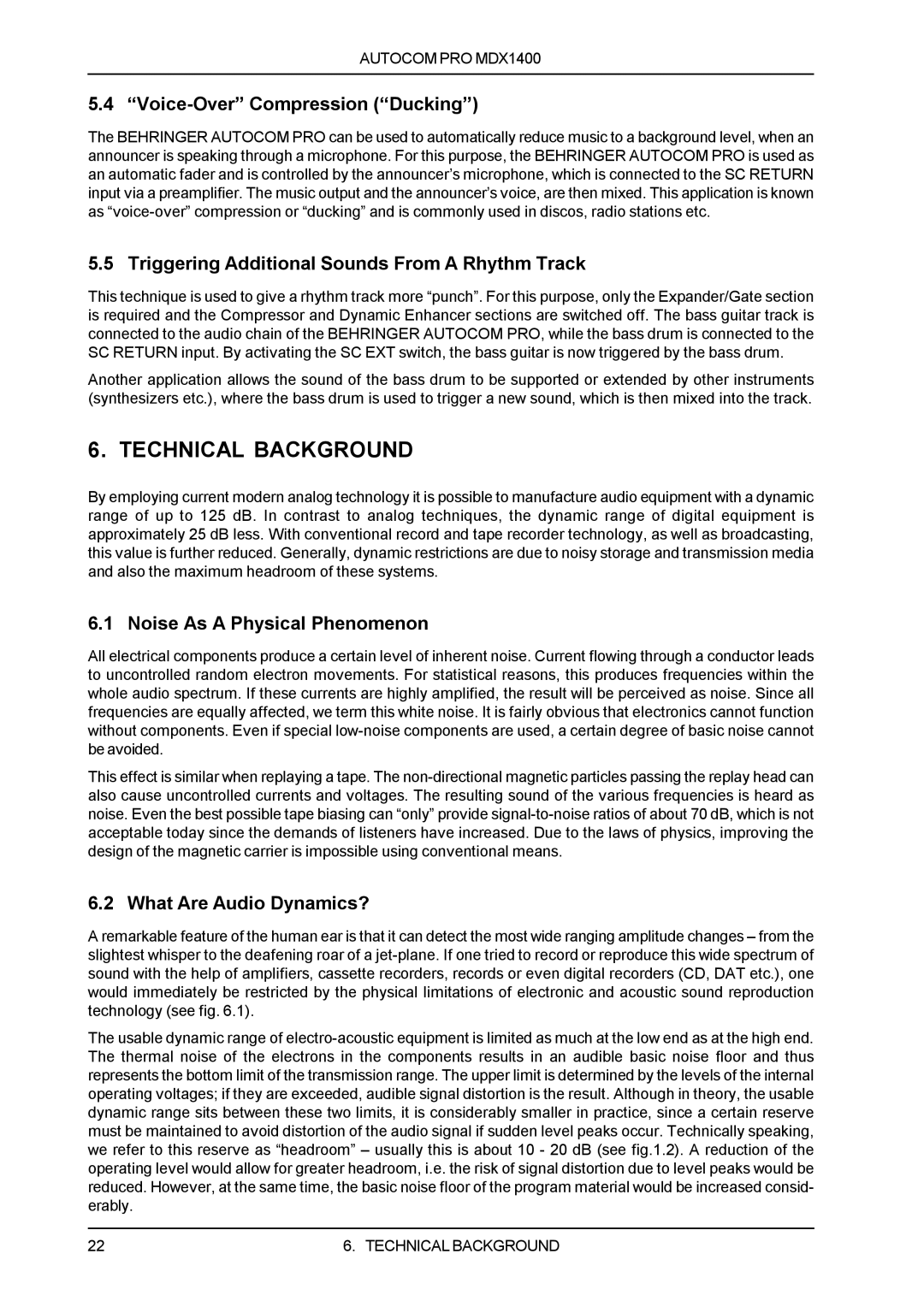
AUTOCOM PRO MDX1400
5.4 “Voice-Over” Compression (“Ducking”)
The BEHRINGER AUTOCOM PRO can be used to automatically reduce music to a background level, when an announcer is speaking through a microphone. For this purpose, the BEHRINGER AUTOCOM PRO is used as an automatic fader and is controlled by the announcer’s microphone, which is connected to the SC RETURN input via a preamplifier. The music output and the announcer’s voice, are then mixed. This application is known as
5.5 Triggering Additional Sounds From A Rhythm Track
This technique is used to give a rhythm track more “punch”. For this purpose, only the Expander/Gate section is required and the Compressor and Dynamic Enhancer sections are switched off. The bass guitar track is connected to the audio chain of the BEHRINGER AUTOCOM PRO, while the bass drum is connected to the SC RETURN input. By activating the SC EXT switch, the bass guitar is now triggered by the bass drum.
Another application allows the sound of the bass drum to be supported or extended by other instruments (synthesizers etc.), where the bass drum is used to trigger a new sound, which is then mixed into the track.
6. TECHNICAL BACKGROUND
By employing current modern analog technology it is possible to manufacture audio equipment with a dynamic range of up to 125 dB. In contrast to analog techniques, the dynamic range of digital equipment is approximately 25 dB less. With conventional record and tape recorder technology, as well as broadcasting, this value is further reduced. Generally, dynamic restrictions are due to noisy storage and transmission media and also the maximum headroom of these systems.
6.1 Noise As A Physical Phenomenon
All electrical components produce a certain level of inherent noise. Current flowing through a conductor leads to uncontrolled random electron movements. For statistical reasons, this produces frequencies within the whole audio spectrum. If these currents are highly amplified, the result will be perceived as noise. Since all frequencies are equally affected, we term this white noise. It is fairly obvious that electronics cannot function without components. Even if special
This effect is similar when replaying a tape. The
6.2 What Are Audio Dynamics?
A remarkable feature of the human ear is that it can detect the most wide ranging amplitude changes – from the slightest whisper to the deafening roar of a
The usable dynamic range of
22 | 6. TECHNICAL BACKGROUND |
